Hello Classics Lover!
Today we’re going deep into history... so deep that we’ll get to the very beginning of time itself.
Of course, many cultures throughout the world have origin stories, legends that explain the very beginning of it all, and the ancient Greeks were no different.
Fortunately for us, the story of the creation of existence and the birth of the very first Greek gods has survived through the writings of the 7th century poet Hesiod, in his epic poem The Theogony.
The ancients felt that this remarkable tale - which is both astonishingly abstract and vivid at the same time - answered the most fundamental question of existence.
How did the world and the universe begin? Where did the gods come from? And does it make sense?
As with all Greek mythology, the story of the creation of the world is shrouded in fantasy and wonder... making for both a mesmerizing read as well as an important foundation for understanding Greek mythology.
With that, please enjoy today’s lesson on the Creation of the World and the Birth of the Titans, below.
All the best,
Anya Leonard
Founder and Director
Classical Wisdom and Classical Wisdom Kids
The Creation of the World:
The Beginning of the Titans
According to Greek Mythology, in the beginning of time there was Chaos. Chaos existed without form or purpose. From chaos, came Gaia, who was the earth and who created all the land.
She was the primordial being of the earth and she gave birth to the heavens, known as Uranus. Gaia and Uranus, who were the earth and the sky, became husband and wife and together had many children.
First, Gaia gave birth to the mighty Titans. There were many and they were immortal and had great strength and power. These included six male Titans and six female Titans. Including the youngest Cronus, below:
Then Gaia gave birth to the Cyclops, who were monsters with one big eye in the center of their foreheads. Next Gaia birthed the hideous Hecatonchires, who were creatures with fifty heads and one hundred arms. Uranus saw the Cyclops and the Hecatonchires as monsters and imprisoned them underneath the earth.
The imprisonment of her children made Gaia sad, so she wanted revenge against Uranus.
Gaia gathered her other children, the mighty Titans, and told them of her plan. However, the Titans were very afraid of their father; at first, no one would help. Then Cronus, the youngest of the Titans agreed. Gaia gave him a sickle and told him to wait for Uranus.
While Cronus hid away, Uranus was crossing the earth, bringing the night. When Uranus came to Gaia, Cronus jumped out and hit Uranus. Part of him flung across the earth before landing in the sea. From the waters rose a beautiful person. She was a goddess with beauty and grace, she stepped upon the land and the flowers grew around her. She was Aphrodite, one of the original Greek Goddesses.
Cronus was now the king of the heavens. He took his father’s place as ruler of the universe. However, with his last breath, Uranus predicted that one of Cronus’s children would take him over one day, just as he had taken over his father. A prediction that one day would come true...
The Birth of Venus (Aphrodite) 1483-1485 by Sandro Botticelli:
Let Little Readers Read!
Download the PDF Here, along with the word bank, review/discussion and activities:
Review:
What was there in the beginning, according to Greek Mythology?
What were the original gods from which everything came?
What type of children did Gaia and Uranus have?
What happened to Uranus?
What goddess was born from the former ruler of the universe?
Who was the ruler in the end?
Discussion:
Why did the Greeks create this story?
Do you think they believed it to be true?
Why did Gaia have different types of children? Why were some good and some monsters?
Can you think of other creation stories and mythologies from other places? What do they have in common? What is different?
Activities:
Make Your Own Creation: Gaia and Uranus made 12 Titans but also many strange monsters and creatures... so try making a strange creation of your own. Take a piece of paper and at the very top draw a head (or many!), then fold the top section over so it’s hidden. Let the next person draw the next section of your creation. Fold again and pass it along! See what bizarre creature you are left with... Make sure to name it and give it a story.
Check out our house’s cool creatures:
Try it again to make a Titan! What special powers does it have?
Larger Group Activity: 10 Times the Monster (If ten children are playing. Call the activity 5 Times the Monster if five children are playing)
Invite youth to sit at a large table (or connect desks in a U shape). Ask youth to create/draw their own creature. Set timer or play music (classical) for one minute. At the end of one minute, the youth will not be finished with their drawings… this is to be expected.
Turn alarm or music off. Request that all youth put their pencils/markers down and pass their drawing pages to the person on their left.
Ask youth to add to the creature they have just been given. Again set timer/music for one minute. Continue having the youth stop, draw, and pass their paper (after a minute) until the original drawings make their way back to their original creators.
Youth can vote on which creature Uranus would find most hideous… and imprison in the underworld.
Aphrodite’s Flower Stomp
Using a variety of colored construction paper, draw and cut out (6”X6”) flowers. Two flowers for each color (at least 6 colors).
Arrange paper flowers in a scattered circular ring on the floor.
Ask one youth to stand in the center of the circle of flowers. They are “it” - Aphrodite.
Cut small color squares from the construction paper used. Place the paper color squares in a container/cup and shake. Randomly pick three paper squares and call them out.
The Aphrodite in the middle of the flower circle must step on the colored flowers in the order in which they are called.
Example: Red - blue - yellow. After listening to the caller, Aphrodite steps on the flowers red - then blue - then yellow.
If -without hints or seeing the color squares- the Aphrodite is able to step on the three colored flowers called -in order- the Aphrodite then returns to the center of the ring of flowers for another round. Each round add one more color to recall.
Once the Aphrodite is unable to remember the color sequence, their turn is over. A new Aphrodite is chosen.
Youth may want to keep record of their highest recall scores.
Act it Out! Make a short play on the ancient Greek creation story. You can use stick puppets, shadow puppets, hand puppets or dress up as the characters.
Color it in: Can you color in Botticelli’s famous “The Birth of Venus”?
(Remember, Venus is the Roman name for Aphrodite)
Have other Activity Ideas? Or know how to adapt these ideas to different age groups? Please share them below - this is a cooperative effort! We would love to hear from you:
Go Further :
(This section is for older kids, parents or educators)
Quotes
As Hesiod in The Theogony describes the birth of the Titans:
“She lay with Heaven and bare deep-swirling Oceanus, Coeus and Crius and Hyperion and Iapetus, Theia and Rhea, Themis and Mnemosyne and gold-crowned Phoebe and lovely Tethys. After them was born Cronos the wily, youngest and most terrible of her children, and he hated his lusty sire.”
Hesiod in The Theogony tells of Gaia and her plan to overthrow Uranus:
`My children, gotten of a sinful father, if you will obey me, we should punish the vile outrage of your father; for he first thought of doing shameful things.’
You can read the original Text HERE:
More Monsters!
It was said that as Uranus lay bleeding upon the earth as Cronus stood over him. The blood spilled from the now deposed ruler of heaven and mixed with the earth, Gaia. Instantly several creatures were born from Gaia as her husband lay dying.
From this blood sprang the Giants, the Erinyes (the avenging Furies), the Meliae (the ash-tree nymphs). These creatures sprang from the blood of Uranus and then began to wander the earth.
Measure the Measurer:
Always worthwhile to take a moment to look at the author. In this case, Hesiod was an ancient Greek poet generally thought to have lived in the 7th century BC (between 750 and 650 BC), which was around the same time as Homer. Hesiod wasn’t only into Greek mythology, he also wrote about farming techniques, early economic thought, archaic Greek astronomy and ancient time-keeping.




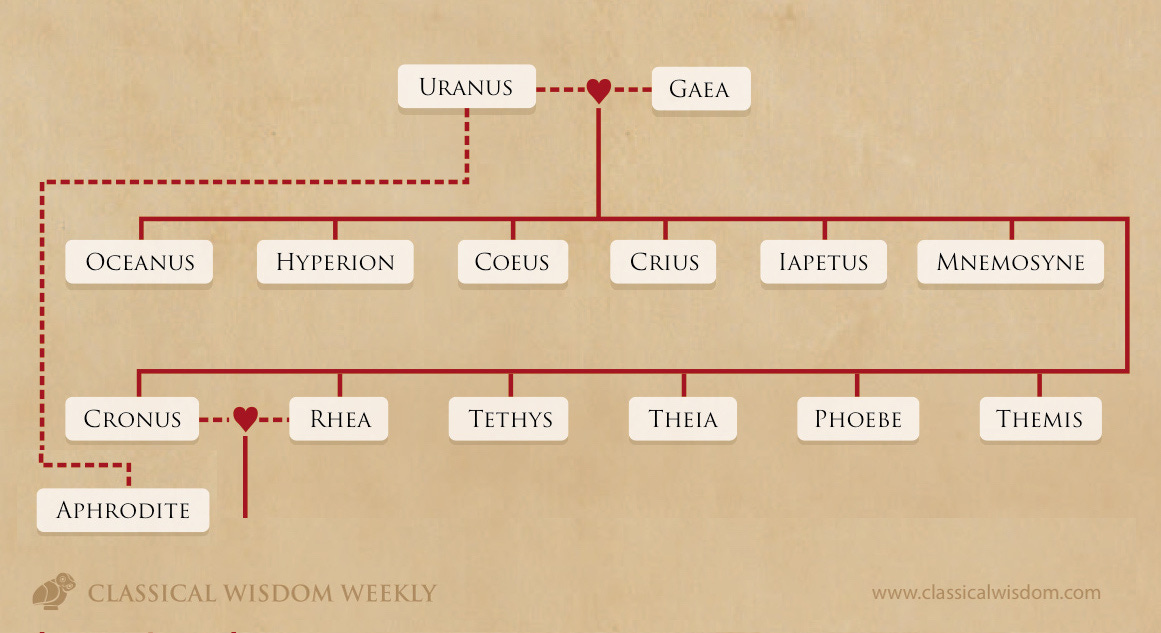
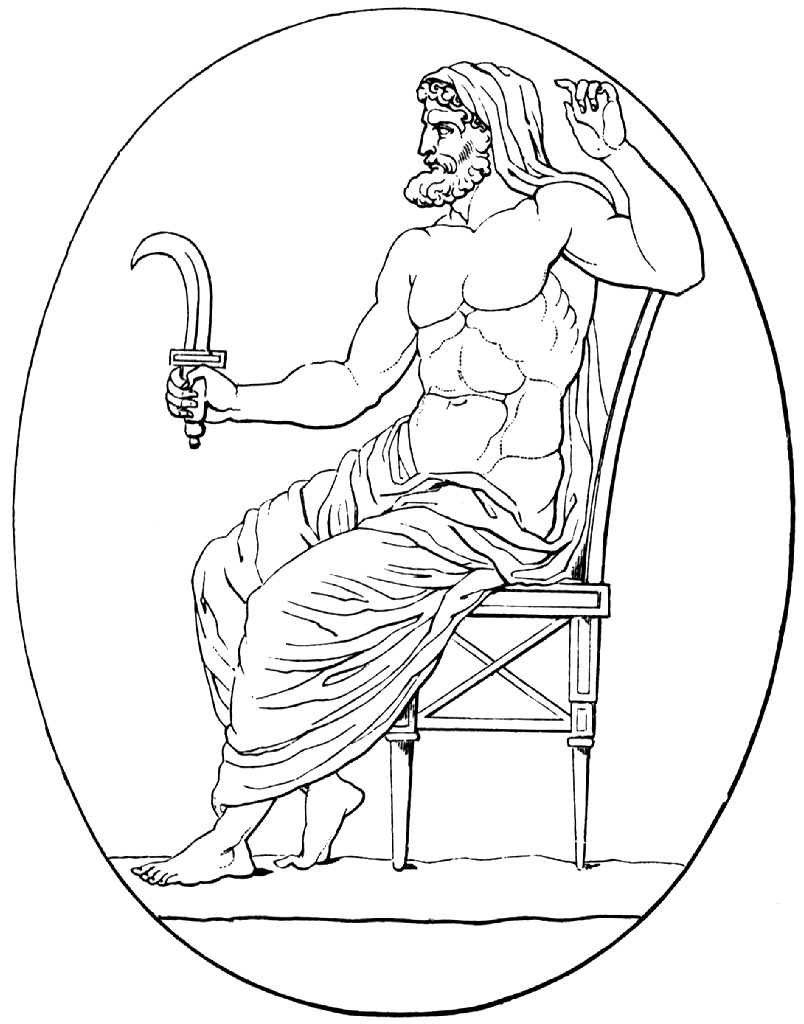
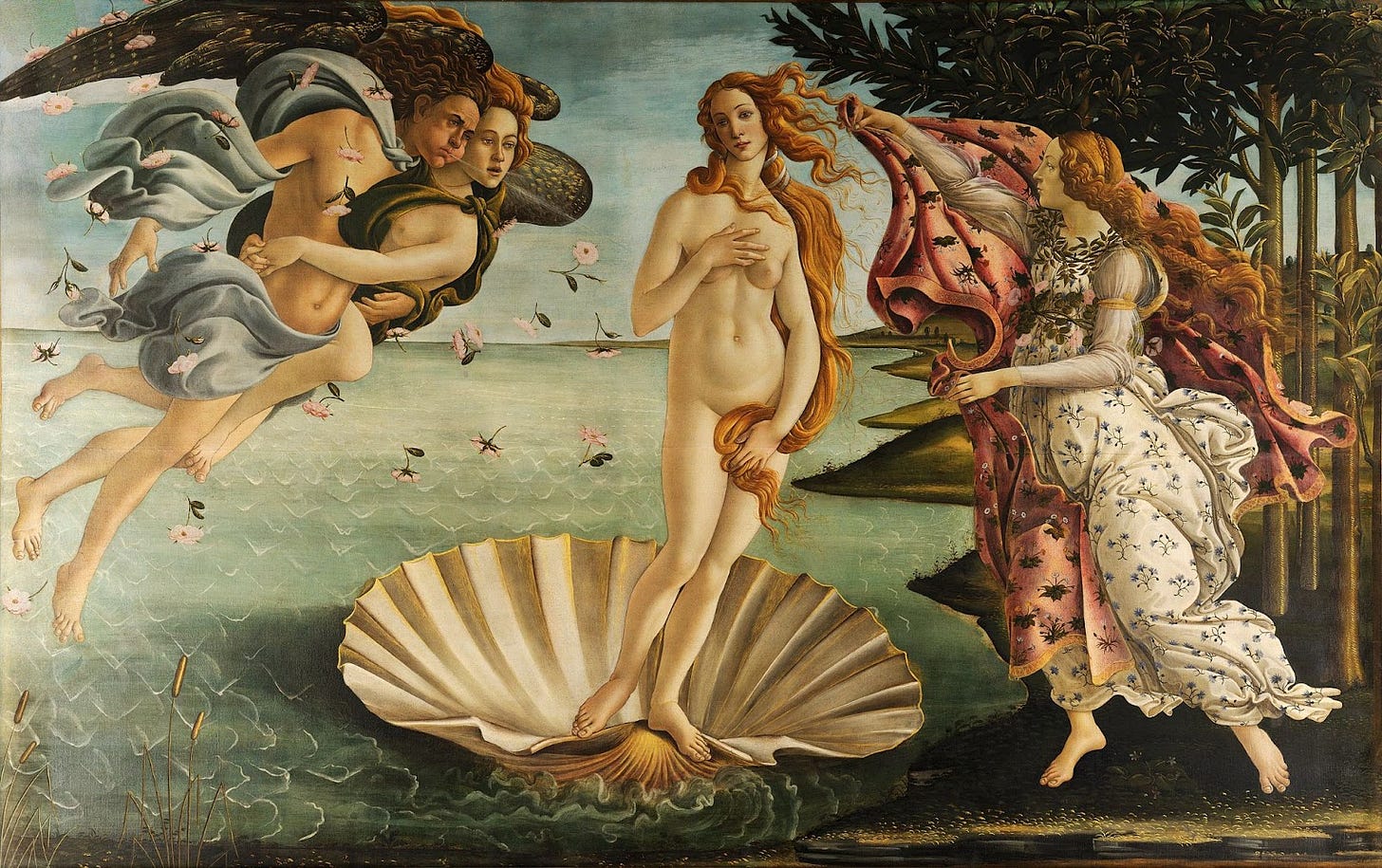
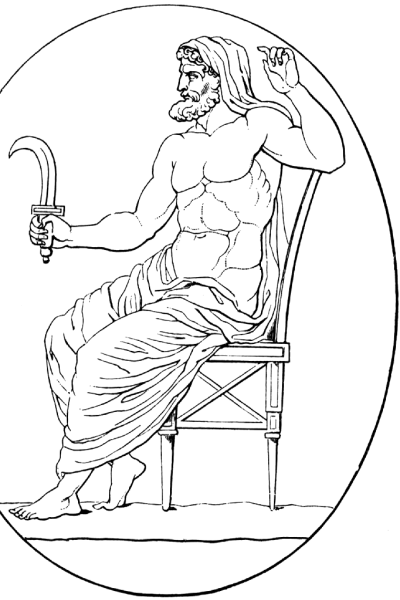


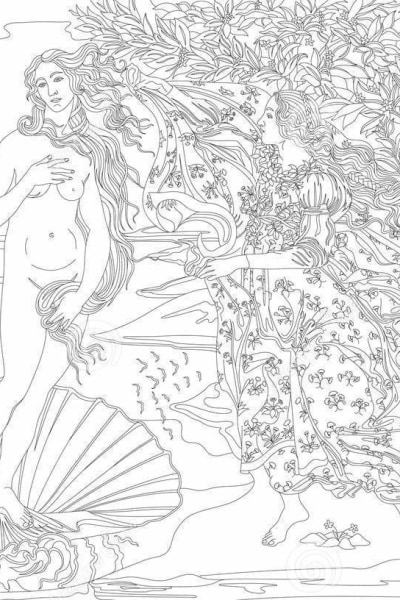
good job!
Why Mythology for “Children?”
when most folks are at an 8th grade level?
Wish the information was presented as clearly in my “Classics” courses in undergrad!
This is fun!
Thanks for the effort…